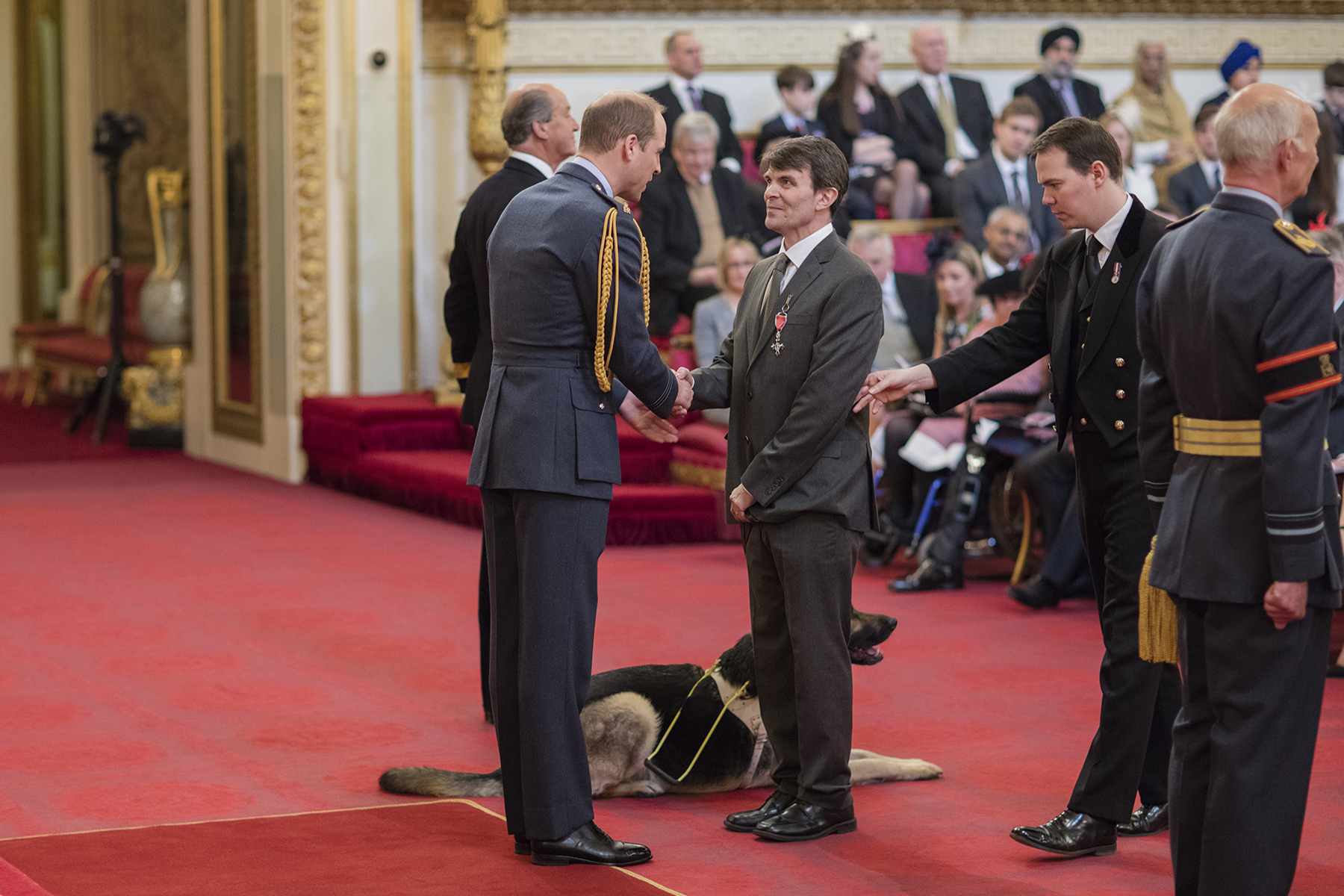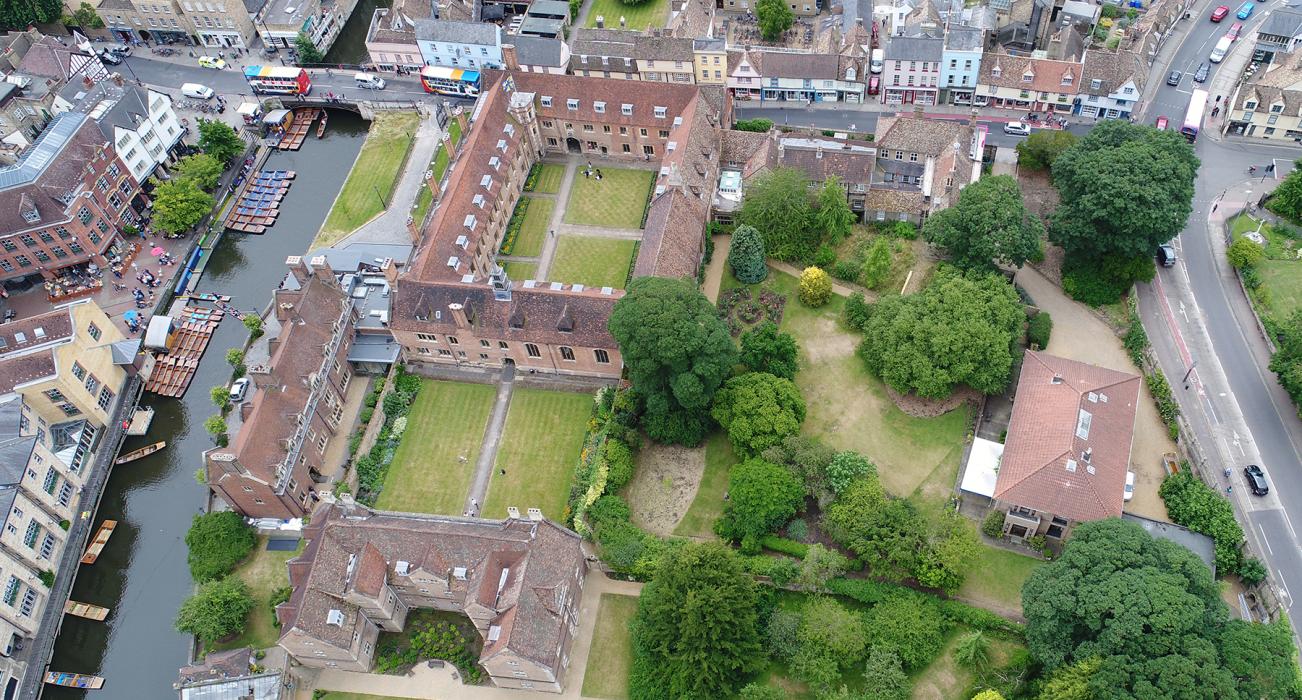Interview with Robin Christopherson from AbilityNet
Robin was presented the MBE by His Royal Highness The Duke of Cambridge at Buckingham Palace shortly after it was announced in the New Year Honours list. We caught up with Robin to interview him about his career and how, as a blind person, technology has helped him and others to reach their full potential.

I must first ask you about your MBE; what was it like going to Buckingham Palace?
Going to the Palace was an extraordinary experience. It was amazing to be surrounded by so many who have made significant contributions to people’s lives across a wide range of areas, and meeting His Royal Highness The Duke of Cambridge was incredible. He was very interested and well informed. Considering there were over seventy people receiving their honours that day he must have a prodigious memory as he asked me about AbilityNet and had no notes or official briefer whispering in his ear. He also said that the corgis would sniff out my guide dog, Archie, later and we’d see which were better behaved. He suspected that it would be Archie.
I didn’t feel like I personally needed to be recognised as I’ve just felt lucky being able to do what I do, but if it will help get the message about how tech can transform people’s lives regardless of their particular abilities then it’ll be an amazing milestone in my life. Just enabling more people to hear the phrase ‘digital inclusion’ with regards to my honour must help get the message out.
What exactly is ‘digital inclusion’?
Digital inclusion means designing apps, websites, gadgets and digital services to be inclusive so anyone can use them. Computers are incredibly powerful and offer numerous choices when it comes to how one uses them. Even at Cambridge, getting a truly excellent education would have been nearly impossible without the right tech to get round my difficulties.
You helped found technology access charity AbilityNet in 1998. Tell us about your work there and how it’s changed over the years?
Yes – I’ve been with AbilityNet since the very start and am by now the longest-serving employee by some years. This means I’ve either well and truly found my calling or that no one else wants me. In that time AbilityNet has grown enormously and now provides a wide range of services such as website and mobile accessibility consultancy (a team which grew from an initial piece of consultancy I did back in 2003) and for several years I headed that team. Now that team is delivering expert services to hundreds of clients including global names such as Microsoft and HSBC and household names such as Sainsbury’s and the BBC. That’s quite enough about my involvement, however, as that’s nothing compared to what AbilityNet is all about – and that’s empowering people through accessibility and technology.
So much has changed in the last nearly two decades. In fact so much has changed in the last two months and continues to do so. As a blind person I’m just one example of how tech has helped improve the life choices for people with disabilities.
We now have all the power of computers with us wherever we go – and with a range of sensors such as camera, GPS, accelerometer and compass etc that, when perhaps one or more of your own senses don’t work, can be incredibly empowering.
Whereas a disabled person used to have to purchase expensive (and often relatively limited) devices,
they can often now use mainstream gadgets such as a smartphone that have all the necessary accessibility features built-in and which offer thousands of apps that have the same functions for a fraction of the price.
The accessibility of devices has transformed in recent years – driven in large part by Apple. Apple has led the way and shamed or energised others to follow. Disabled people are using their smartphones to aid mobility; manage their health; interact with colleagues; friends and society; play an active part in commerce and also have a lot of fun. The accessibility of the Mac and I-devices has ‘mainstreamed’ inclusion and, because of its influence on Android and other manufacturers, has meant that inclusion is now more affordable than ever before and we have largely seen the end of expensive, specialist, devices.
Having said the above, I actually use my phone considerably less since getting my smartwatch; which is like a quick window into my phone’s most commonly used features – it taps me on the wrist when I need to turn down the next street, it means I can pay for items without even taking my phone out of my pocket, and it lets me know how bad my night’s sleep has been – but behind the watch and driving all its services is always the phone.
And what kinds of work were you doing before AbilityNet?
Before AbilityNet I was an IT instructor for the RNIB and as such was able to play with (I mean research) incredible technologies such as screen reading software for Windows, flatbed scanners that can read back printed materials and talking notetakers – all of which sounded like a Dalek with a bad head-cold but which nevertheless were opening doors like never before for people with a vision impairment.
In the UK today 90% of jobs include a computer of some shape or form, and these technologies helped make many more careers possible. That said, there are still 73% of people with a vision impairment without paid work in the UK today which is why I feel so strongly about the main aspect of my work today – namely regular public speaking to both conference and corporate audiences.
If you’d like to see the strong messages I try to convey about the empowering potential of tech, simply Google me or try a search on YouTube (plug over).
Is digital inclusion now more of a mainstream issue than it used to be?
The concept of inclusive design is now not only more of a mainstream issue – it is, in fact, a purely mainstream issue.
We’re living in the age of extreme computing. Let’s think about how we use computers today. In this mobile-first world many of us are interacting with devices in ways that are far removed from the conventional set-up of your office or home where you sat in your comfortable chair, had your preferred keyboard, mouse and screen and ultimate control over your environment. If the sun was too bright or too dull, for example, you’d pull the blind or turn on the lights.
Now, whether it’s juggling a phone one-handed as you weave down the street coffee in-hand, trying to finish that text or transaction, or tilting and shading your phone under the glare of the midday sun, you’re involved in extreme computing – and extreme computing needs inclusive design.
If you have no disability but you are using your phone one-handed on the move then you actually do have a temporary impairment that is identical to someone who has a motor difficulty 24–7. It’s true. You need exactly the same design considerations (good sized tappable areas separated by enough white space) as is needed by someone with Parkinson’s or a tremor.
In the same way, if you are trying to find out some information or purchase a product online very quickly in the few seconds you have available as you stand on that escalator, then you require that the site or app you are using has extreme usability to be able to complete it in the time you have available. This extreme usability is likewise needed by someone with a learning difficulty to be able to successfully complete it regardless of how much time they have.
You get the idea. Similarly good colour contrast and choice of font will help those with small screens on a sunny day just the same as it will help those with a vision impairment regardless of their screen size.
So my message is always that technology needs to work for everyone regardless of impairment or environment – and luckily audiences have been very receptive (particularly when you throw in lots of demos of cutting-edge technologies too).
Any last thoughts for the readers?
A big “Hello” from me to everyone from Magdalene past and present. Make the most of it while you’re there and help support it afterwards. We’re the lucky ones. And if you know of anyone who you think might benefit from finding out a little more about how technology can help them in their education, at home or at work then please get in touch with AbilityNet – I’m sure we can help.
Read more of Robin's thoughts on technology
Robin writes frequent articles on the power of cutting-edge technology on the AbilityNet. He’d also appreciate people following him on @USA2DAY on Twitter.
